WINTER SCENE ON A FROZEN CANAL BY HENDRICK AVERCAMP (1620)
He’s not as famous as Rembrandt or Vermeer, but no painter of the Dutch Golden Age – which corresponded with one of the coldest periods of the last millennium – depicted the frozen Low Countries with the frequency and sensitivity of Avercamp. Born deaf and mute, he learned to skate as a child and became a specialist in winter scenes, which collectors bought as paintings and prints. Like most of his winter landscapes, this one makes brilliant use of one-point perspective: in the foreground we see fashionable skaters and masked revellers on horse-drawn sleighs, while other sliders, some adept and some less so, extend out to the horizon.
HUNTERS IN THE SNOW BY PIETER BRUEGEL THE ELDER (1565)
Winter scenes, technically more challenging than summer ones, were relatively rare in western art until the early Renaissance. One of six panels representing the seasons (though only five survive), Bruegel’s vastly detailed masterpiece marks a major shift from symbolic representation of the seasons, the previous European tradition, to an exclusively secular scene.

It is a fine winter day, and townsfolk are skating and playing hockey, but the hunt has not gone well. The hounds look exhausted, and the hunters have just a single fox among them.
FOUR SEASONS: WINTER BY FRANCOIS BOUCHER (1755)
This allegory of the cold months typifies the Rococo style of the 18th Century: instead of depicting nature or even agricultural labour, Boucher gives us a flirty duo sliding along in a golden sledge.
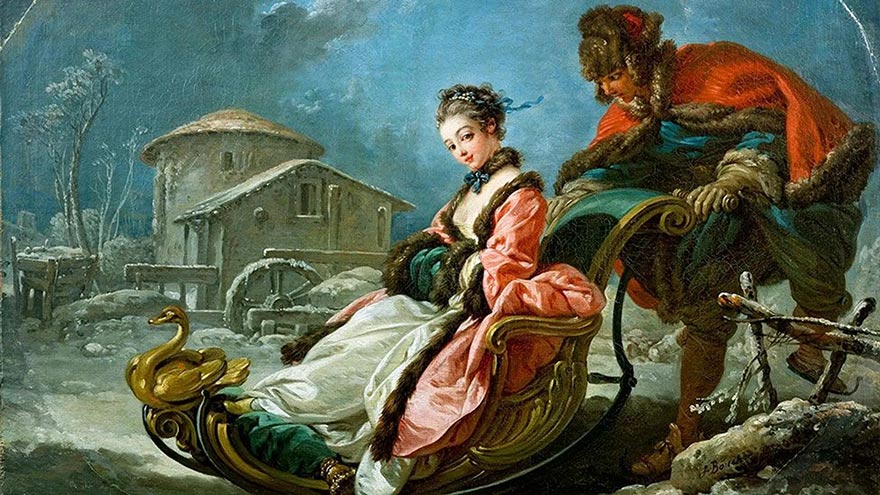
(The female figure’s outfit, despite the fur, is definitely not weatherappropriate.) The painting was executed for Madame de Pompadour, Louis XV’s official mistress, and its irregular shape suggests that it probably hung above a door in one of her many residences.
THE SEA OF ICE BY CASPAR DAVID FRIEDRICH (1824)
German painting’s great romantic, Friedrich here depicts the shipwreck of the HMS Griper, a British vessel on an expedition to the North Pole. The iceberg totally dwarfs the ship; it is a gravestone as much as an obstacle. As so often in Friedrich’s art, nature here is at once sublimely beautiful and totally indifferent to human life.
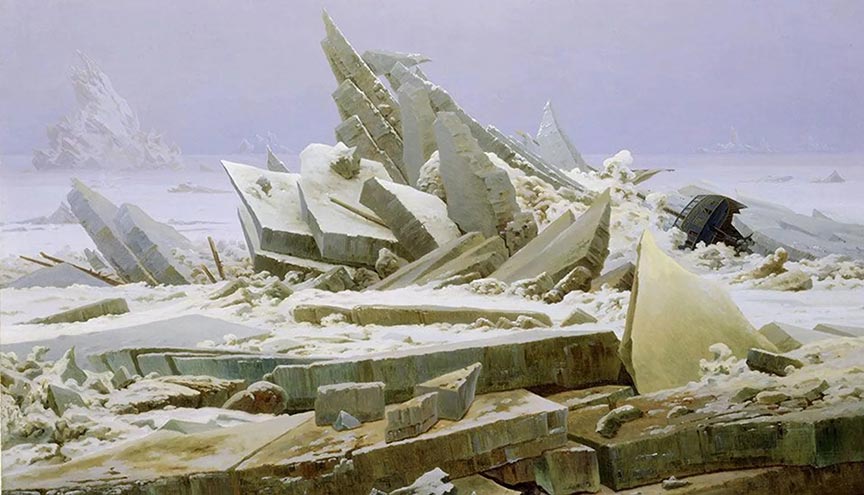
WINTER LANDSCAPE BY WASSILY KANDINSKY (1911)
Early in his career Kandinsky developed a theory of colours that ascribed synesthetic, nearly mystical powers to certain combinations of tones.
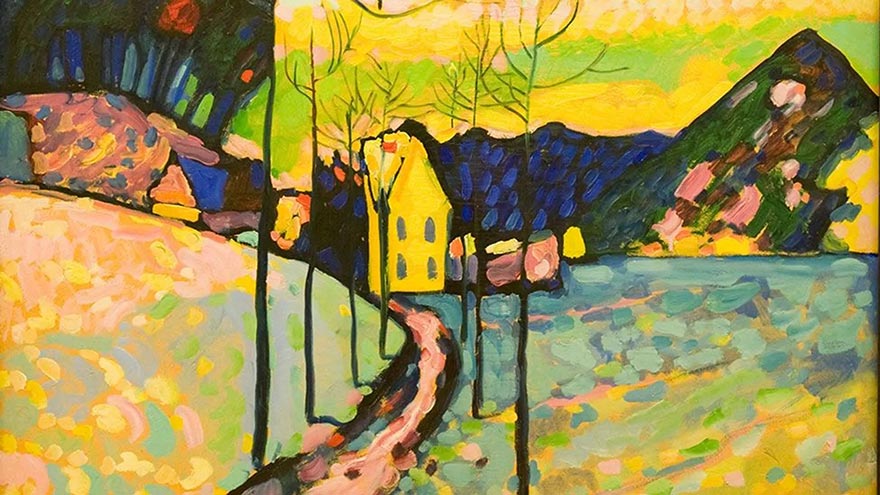
In this depiction of a snow-blanketed country landscape, one of his last figurative compositions before turning entirely to abstraction, the yellow sky hums with effects of green and white, the path to the small house in the centre glows pink, and the hillside is a riot of improvised coloured daubs.
THE DRUM BRIDGE AND YUHI HILL AT MEGURO BY HIROSHIGE (1857)
One of the images from One Hundred Views of Edo, his wildly popular series of ukiyo-e prints, this image depicts a rare stone bridge in the city we now call Tokyo.

Captured at an oblique angle, the bridge seems dwarfed under the snow-filled sky, and the passersby, shrouded under bamboo hats, get lost in the landscape. Hiroshige’s winter scenes are perhaps his most sensitive; under snow, even the big city feels impermanent. THE
FOREST IN WINTER AT SUNSET BY THÉODORE ROUSSEAU (1846–47)
After endless rejections at the Paris Salon, Rousseau became one of the leading figures of the Barbizon school, a collection of mid 19th Century painters who depicted the forest of Fontainebleau. There he invested landscape painting with an ecological obligation.
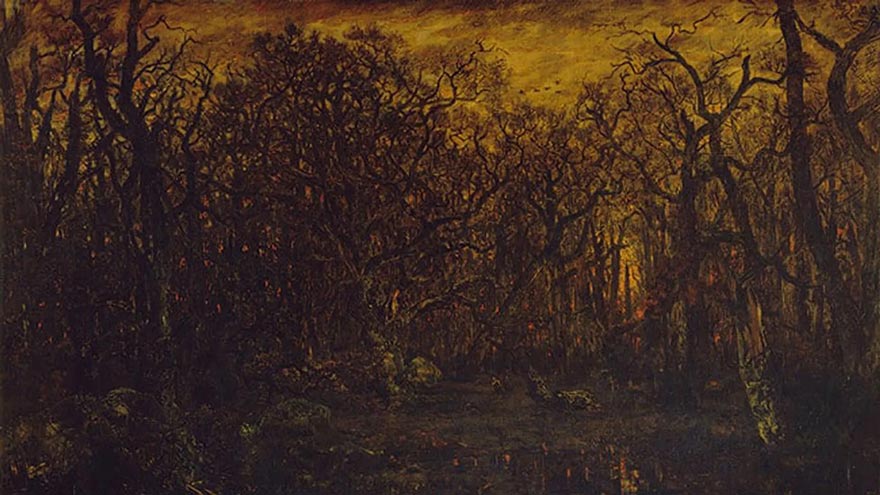
This massive painting, unfinished at his death, is less concerned with the exact appearance of the bare oaks of the forest than with our place in nature, and the emotions that nature inspires.
SNOW STORM: HANNIBAL AND HIS ARMY CROSSING THE ALPS BY JMW TURNER (1812)
The Carthaginian general is nowhere to be seen in this churning, nightmarish depiction of bedraggled invaders attacked by local forces in Val d’Aosta and buffeted by an awesome, almost apocalyptic storm.
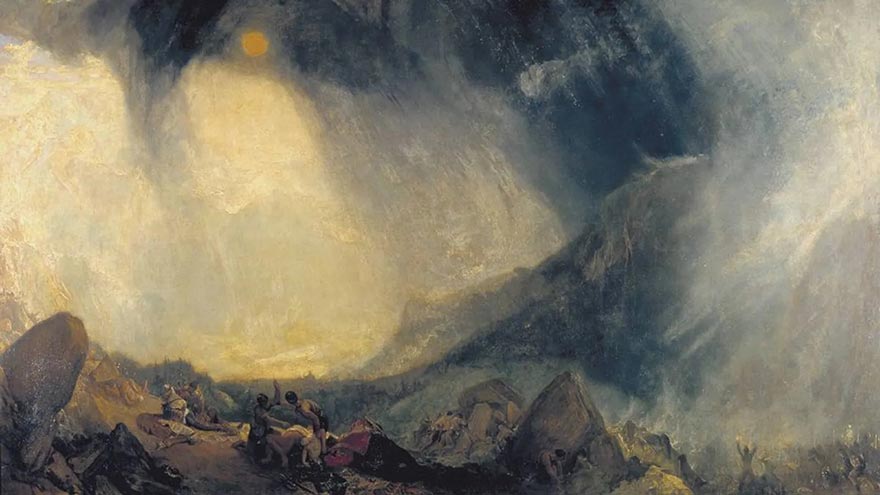
The giant, wavelike black cloud and the avalanche on the Alp at right express Turner’s vision of sublime nature, but this painting, realised when Napoleon was invading the same region, was also a political statement.
WINTER LANDSCAPE BY EDVARD MUNCH (1915)
Painted in the depth of the Norwegian winter, Munch’s placid snowscape is less angst-ridden than his more famous images of vampires or screamers.
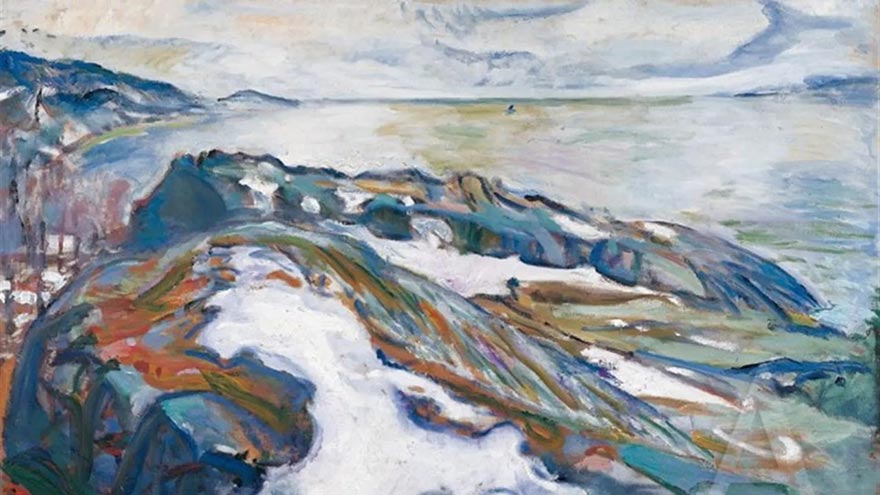
Yet the unexpectedly colourful ridges of the snow-covered mountains – rivulets of green, blue, and pink – make even this relatively tranquil image hum with the emotion and excitement that characterise his best work.
THE MAGPIE BY CLAUDE MONET (1868-69)
Monet was a master of the winter scene – he painted more than 100 of them, and when Edouard Manet saw the Impressionist’s snowscapes he abandoned any effort to make his own.
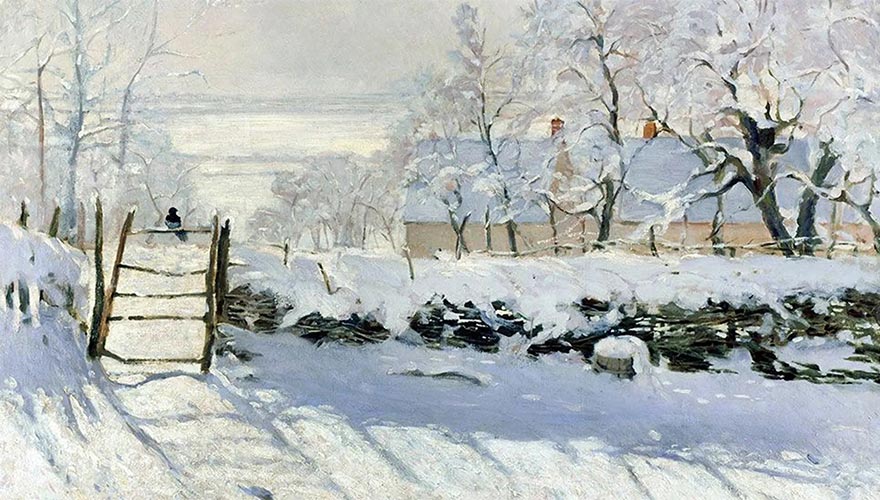
This is Monet’s largest winter painting, depicting a single black bird on a fence in Etretat – but what’s most thrilling about the work is the shadows on the snow, done not in black but in a conventionshocking blue.
Source: www.bbc.com